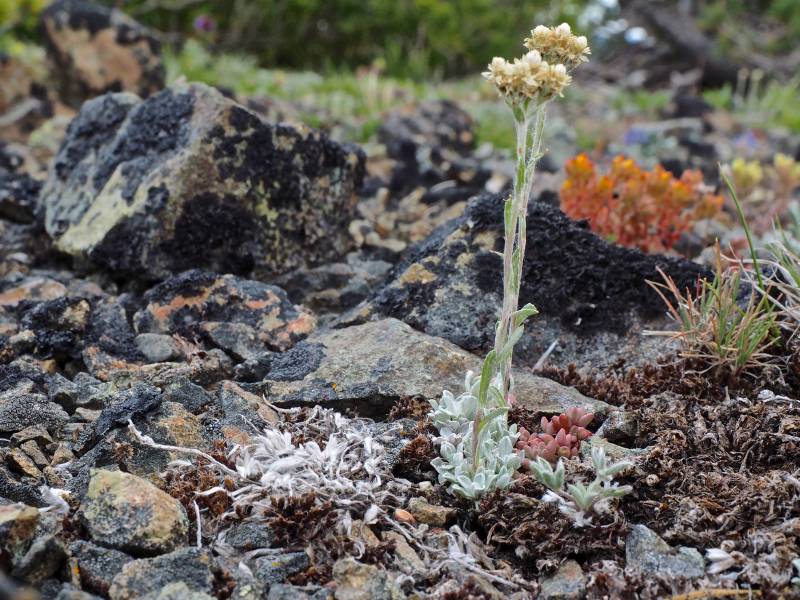Hosted by the University of Washington Herbarium, Burke Museum
Publication: Fruct. Sem. Pl. 2: 410. 1791.
Origin: Native
Herbarium search: CPNWH
Notes: The application of this species concept to plants in Washington warrants further consideration. .
FNA19:
"Excluded names:
Some Antennaria names are based on early-generation interspecific hybrids, including:
A. ×rousseaui A. E. Porsild = ? A. alpina × A. rosea
Antennaria alpina is one of the more morphologically variable agamic complexes in the genus. Some taxonomists have argued that true Antennaria alpina does not occur in North America, because none of the North American material exactly matches the type of A. alpina, which is from Lapland (M. O. Malte 1934; A. E. Porsild 1965). If one uses a strict typological species concept, then this is true; I recognize that this species complex is composed of innumerable apomictic clones and am circumscribing a broad species concept for A. alpina. The potential morphologic overlap between the A. media and A. alpina complexes is a major taxonomic problem. The chief difference between members of the two complexes is the presence of prominent flags on cauline leaves in A. alpina and their absence in A. media. Antennaria alpina of North America is gynoecious and characterized by its dark green to black phyllaries and conspicuous flags on the distal cauline leaves. The basal leaves vary from glabrous, as in the type material, to pubescent. The primary progenitors of the A. alpina complex include A. aromatica, A. densifolia, A. friesiana subsp. alaskana, A. friesiana subsp. neoalaskana, A. monocephala subsp. monocephala, and A. pulchella."
Last updated 5/27/2020 by David Giblin.

